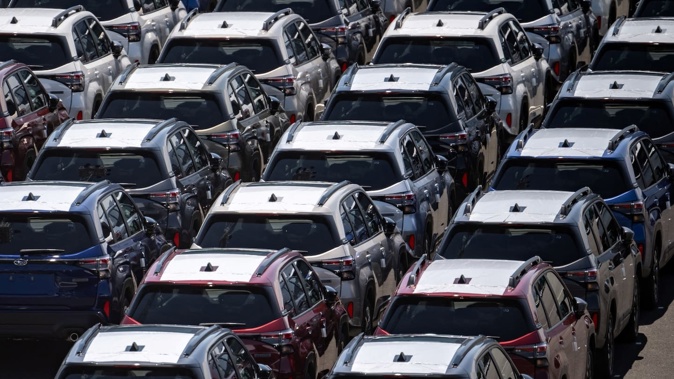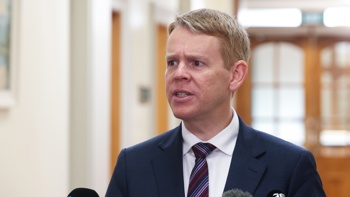
United States tariff negotiations with key trading partners have shifted into high gear as economies race to avoid steeper duties before an August 1 deadline.
Many of these tariff hikes were part of a package first announced in April, under which dozens of economies were due to face higher levies - up from a 10% level - over their trade surpluses with the US.
The twice-postponed deadline for duties to take effect is now Friday, August 1.
But Washington has expanded its group of targets coming up against these tariffs, while announcing agreements with the European Union, Britain, Vietnam, Japan, Indonesia, and the Philippines.
A deal with the EU unveiled today sees a 15% tariff imposed on European exports to the US, down from the 30% that US President Donald Trump earlier threatened.
Where do other US trade talks stand?
South Korea: Extra pressure
Seoul is racing to reach a deal with Washington, as Tokyo’s success in landing an agreement has “amped up the pressure for South Korea”, a government source told AFP.
Local media reported that Seoul was preparing to propose more than US$100 billion in investment as part of a broader agreement, with expected participation by major firms such as Samsung and Hyundai Motor. The South Korean Government did not confirm this.
South Korean officials have outlined proposals to deepen collaboration in sectors like shipbuilding, semiconductors, and batteries.
National Security Adviser Wi Sung Lak has told reporters that the two countries are in “the final and most crucial phase of negotiations” to avert Trump’s proposed 25% duty.
India: Cautious optimism
Indian Commerce Minister Piyush Goyal told Bloomberg Television last week that he was optimistic his country could reach an agreement with the US to avert Washington’s 26% tariff threat.
Goyal insisted there were not any sticking points in the US-India relationship or in trade talks and clarified that immigration rules - including those around H-1B visas for skilled workers - had not come up in negotiations.
Despite Goyal’s remarks, local media reported the prospects of an interim deal before August 1 had dimmed.
Taiwan: Working hard
Taiwanese Premier Cho Jung Tai said last week that officials are “working hard” on negotiations, amid worries that an unfavourable tariff level could hit the self-ruled island’s economy.
Vice-President Hsiao Bi Khim said Taipei’s negotiating team was “working almost 24 hours a day to achieve trade balance and Taiwan’s industrial interests, and even to further deepen co-operation”.
Canada, Mexico: Deal unclear
Although Canada and Mexico were spared from Trump’s “reciprocal” tariffs announced in April, goods from both countries entering the US generally face a separate 25% duty if they fall outside a North American trade pact.
This figure stands to jump to 30% for Mexico come August 1, while the level for Canada was set at 35%.
Mexican President Claudia Sheinbaum said her Administration was “doing everything” possible to avert the duties and that she would speak with Trump if necessary to try to reach a pact.
Trump told reporters at the weekend there was no deal with Canada so far.
Brazil: Political nature
Brazil is girding for a virtual trade embargo on its planes, grains, and other goods if Trump’s threatened 50% tariff on its exports takes effect on August 1.
The US runs a trade surplus with Latin America’s biggest economy, which was not originally expected to face steeper tariffs under Trump’s “reciprocal” duties plan.
Trump has not attempted to hide the political motivation in targeting Brazil, citing a judicial “witch hunt” against his right-wing ally, former president Jair Bolsonaro, when he unveiled the tariff rate.
The political nature of the spat makes a last-minute deal appear less likely.
Tariff categories
Here is a summary of duties Trump has introduced in his second term.
Global tariffs
US “reciprocal” tariffs - imposed under legally contentious emergency powers - are due to jump from 10% to various steeper levels for a list of dozens of economies.
The hikes were to take effect on July 9 but Trump postponed them days before imposition, marking a second delay since their shock unveiling in April.
A 10% “baseline” levy on most partners, which Trump imposed in April, remains in place.
Certain products like pharmaceuticals, semiconductors and lumber are excluded from Trump’s “reciprocal” tariffs but may face separate action under different authorities.
This has been the case for steel, aluminium, and soon copper. Gold and silver, alongside energy commodities, are also exempted.
Canada, Mexico
Canadian and Mexican products were hit by 25% US tariffs shortly after Trump returned to office, with a lower rate for Canadian energy. Trump targeted both neighbours over illegal immigration and fentanyl trafficking, also invoking emergency powers.
Products entering the United States under the USMCA North American free trade pact, covering large swathes of goods, are expected to remain exempt - with Canadian energy resources and potash, used as fertiliser, to still face lower rates.
China focus
Trump has also taken special aim at China. The world’s two biggest economies engaged in an escalating tariffs war this year before their temporary pullback.
The countries imposed triple-digit duties on each other at one point, a level described as a trade embargo.
After high level talks, Washington lowered its levies on Chinese goods to 30% and Beijing slashed its own to 10%.
This pause is set to expire on August 12, and officials will meet for further talks tomorrow in the Swedish capital of Stockholm.
The US level is higher as it includes a 20% tariff over China’s alleged role in the global fentanyl trade.
Beyond expansive tariffs on Chinese products, Trump ordered the closure of a duty-free exemption for low-value parcels from the country. This adds to the cost of importing items like clothing and small electronics.
Autos, metals
Trump has targeted individual business sectors too, under more conventional national security grounds, imposing a 25% levy on steel and aluminium imports which he later doubled to 50%.
The US President has unveiled plans for a 50% tariff on copper imports starting August 1 as well and rolled out a 25% tariff on imported autos, although those entering under the USMCA can qualify for a lower rate.
Trump’s auto tariffs impact vehicle parts too, but new rules ensure automakers paying vehicle tariffs will not also be charged for certain other duties.
He has ongoing investigations into imports of lumber, semiconductors, pharmaceuticals and critical minerals that could trigger further duties.
Legal challenges
Several legal challenges have been filed against the tariffs Trump invoked citing emergencies.
The US Court of International Trade ruled in May that the President had overstepped his authority, but a federal appeals court has allowed the duties to remain while it considers the case.
If these tariffs are ultimately ruled illegal, companies could possibly seek reimbursements.
-Agence France-Presse
Take your Radio, Podcasts and Music with you









